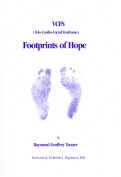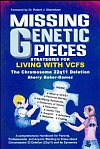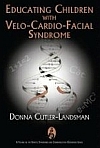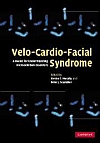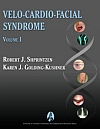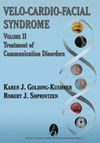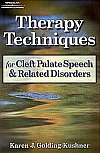
Footprints of Hope: VCFS (Velo-Cardio-Facial Syndrome)“, by Raymond Tanner. From the author: “The book ‘VCFS Footprints’ of hope is a compilation of stories from families from Australia, Israel, France, New Zealand, South Africa, United Kingdom and the USA who tell about their trials and tribulations in bringing up a child with VCFS. It also describes my life story (aged 54 – diagnosed at 43) and my two sons – James – deceased – aged 9 days old, died 18 years ago; Andrew – aged 16. There are also additional information etc. The foreword is written by Dr Shprintzen Ph.D. Proceeds from the book will go to the VCFSEF Foundation and to the VCFS Foundation Queensland Inc new VCFS Clinic project. ” The book can be purchased from the Australian Online Bookshop. Not currently published in the U.S.
MISSING GENETIC PIECES: Strategies for Living with VCFS, The Chromosome 22q11 Deletion”, written by Ms. Sherry Gomez of Arizona: A comprehensive HANDBOOK for Parents, Professionals and Anyone wanting to know about Chromosome 22 Deletion (22q11) and its dynamics. Note: A portion of the proceeds from this book is being donated to the VCFS Educational Foundation, Inc.
Practical Handbook for Educating Children with Velo-Cardio-Facial Syndrome and Other Developmental Disabilities by Donna Landsman, the person who has lectured more about education and VCFS than any other person in the world. Available on advance order from Amazon.com for $55.00.
Velo-cardio-facial Syndrome: A Model for Understanding Microdeletion Disorders, Edited by Kieran C. Murphy Education and Research Centre, Royal College of Surgeons of Ireland, Peter J. Scambler Institute of Child Health, University College London.
Velo-Cardio-Facial Syndrome, volume 1 by Robert J. Shprintzen and Karen J. Golding-Kushner (Plural Publishing, 2008)
Velo-Cardio-Facial Syndrome, volume1
is a comprehensive text describing the full range of clinical findings associated with VCFS. The text is accompanied by a DVD that contains 19 videos that compliment the text and more than 110 figures, many in color, including growth charts specific to VCFS. Chapter 1 details the history of VCFS, its delineation, and the current interest in this important syndrome. Chapter 2 details the phenotypic spectrum of VCFS, detailing 190 clinical features of the syndrome with 72 figures associated with the written descriptions. Chapter 3 discusses the genetics of VCFS in straightforward and simple language that is suitable for all readers. Included in Chapter 3 is a description of how the deletion occurs and why it can account for the expansive clinical spectrum. Chapter 4 is a guide for the clinical management of VCFS including triage systems that are specific to the natural history of the syndrome. Chapter 5 provides an important discussion of growth, weight gain, and feeding in VCFS and includes the first growth chart specific to the syndrome. Feeding techniques are discussed, as are the reasons for feeding difficulties in VCFS. The aim of this chapter is to avoid stress and medical dependency that can be better understood based on the growth curves provided.
Velo-cardio-facial Syndrome volume 2: Treatment of Communication Disorders by Karen J. Golding-Kushner and Robert J. Shprintzen (Plural Publishing, 2011)
Volume II of this set opens with information of aspects of speech and language and the difficulties most often associated with VCFS. Authors also consider how these difficulties interact with each other. Chapter two describes the aspects of articulation and resonance, how they are best evaluated, and on surgical management. In Chapter three, general principles are outlined on how to make articulation therapy successful for children with cleft palate, VCFS, or both, many of which apply to language therapy and other behaviors, as well. The last chapter offers insights into prevention of the abnormal articulation patterns that tend to develop and how to guide children through stages of language development.
